
a.
Concept Introduction:
Internal Control: Internal control refers to the ideas, policies, and practices that are established by a business to make sure they monitor risk factors and address them to prevent losses or fraud. Internal controls serve to reduce risks, safeguard assets, and maintain record accuracy.
To state: Whether the given statement is true or false.
b.
Concept Introduction:
Internal Control: Internal control refers to the ideas, policies, and practices that are established by a business to make sure they monitor risk factors and address them to prevent losses or fraud. Internal controls serve to reduce risks, safeguard assets, and maintain record accuracy.
To state: Whether the given statement is true or false.
c.
Concept Introduction:
Internal Control: Internal control refers to the ideas, policies, and practices that are established by a business to make sure they monitor risk factors and address them to prevent losses or fraud. Internal controls serve to reduce risks, safeguard assets, and maintain record accuracy.
To state: Whether the given statement is true or false.
d.
Concept Introduction:
Internal Control: Internal control refers to the ideas, policies, and practices that are established by a business to make sure they monitor risk factors and address them to prevent losses or fraud. Internal controls serve to reduce risks, safeguard assets, and maintain record accuracy.
To state: Whether the given statement is true or false.
Want to see the full answer?
Check out a sample textbook solution
Chapter 6 Solutions
FINANCIAL+MANAG.ACCT.(LL)-W/ACCESS
- Can you solve this financial accounting problem using appropriate financial principles?arrow_forwardI am searching for the correct answer to this general accounting problem with proper accounting rules.arrow_forwardYou have been asked to test the effectiveness of Ingo Corporation’s control of manually approving all purchases over $25,000. During the year, Ingo Corporation has made 1,000,000 purchases, of which 3,000 were over $25,000. Jian Zhang, CPA, your supervisor, asked you to use a tolerable deviation rate of 4 percent (although she expects the rate to be only approximately 0.50 percent) and a 5 percent risk of assessing control risk too low. Use the following to determine the planned assessed level of control risk and the assessed level of control risk. (Planned) Assessed Level of Control Risk Tolerable Deviation Rate Low 2−7% Moderate 6−12% Slightly below the maximum 11−20% Maximum Over 20% b. Determine the appropriate sample size and allowable number of deviations using Figure 9.4. sample size:arrow_forward
- I need help with this financial accounting problem using proper accounting guidelines.arrow_forwardAssume and give answer.arrow_forwardYou have been asked to test the effectiveness of Ingo Corporation’s control of manually approving all purchases over $25,000. During the year, Ingo Corporation has made 1,000,000 purchases, of which 3,000 were over $25,000. Jian Zhang, CPA, your supervisor, asked you to use a tolerable deviation rate of 4 percent (although she expects the rate to be only approximately 0.50 percent) and a 5 percent risk of assessing control risk too low. Use the following to determine the planned assessed level of control risk and the assessed level of control risk. (Planned) Assessed Level of Control Risk Tolerable Deviation Rate Low 2−7% Moderate 6−12% Slightly below the maximum 11−20% Maximum Over 20% Expected Population Deviation Rate (as Percentages) Tolerable Deviation Rate 2% 3% 4% 5% 6% 7% 8% 9% 10% 15% 20% 0.00% 149(0) 99(0) 74(0) 59(0) 49(0) 42(0) 36(0) 32(0) 29(0) 19(0) 14(0) 0.25 236(1) 157(1) 117(1) 93(1) 78(1) 66(1) 58(1) 51(1) 46(1) 30(1) 22(1) 0.50 * 157(1)…arrow_forward
- What is taxable income? Financial accountingarrow_forwardI need the correct answer to this financial accounting problem using the standard accounting approach.arrow_forwardOn September 1, Rivertown Inc. paid $9,000 for a six- month insurance policy that begins on September 1. What amount would appear in the Prepaid Insurance account on an adjusted trial balance dated December 31? A. $3,000 B. $1,500 C. $4,500 D. $0arrow_forward
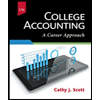 College Accounting (Book Only): A Career ApproachAccountingISBN:9781337280570Author:Scott, Cathy J.Publisher:South-Western College Pub
College Accounting (Book Only): A Career ApproachAccountingISBN:9781337280570Author:Scott, Cathy J.Publisher:South-Western College Pub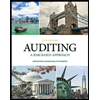 Auditing: A Risk Based-Approach (MindTap Course L...AccountingISBN:9781337619455Author:Karla M Johnstone, Audrey A. Gramling, Larry E. RittenbergPublisher:Cengage Learning
Auditing: A Risk Based-Approach (MindTap Course L...AccountingISBN:9781337619455Author:Karla M Johnstone, Audrey A. Gramling, Larry E. RittenbergPublisher:Cengage Learning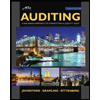 Auditing: A Risk Based-Approach to Conducting a Q...AccountingISBN:9781305080577Author:Karla M Johnstone, Audrey A. Gramling, Larry E. RittenbergPublisher:South-Western College Pub
Auditing: A Risk Based-Approach to Conducting a Q...AccountingISBN:9781305080577Author:Karla M Johnstone, Audrey A. Gramling, Larry E. RittenbergPublisher:South-Western College Pub- Principles of Accounting Volume 1AccountingISBN:9781947172685Author:OpenStaxPublisher:OpenStax College
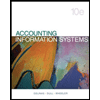 Pkg Acc Infor Systems MS VISIO CDFinanceISBN:9781133935940Author:Ulric J. GelinasPublisher:CENGAGE L
Pkg Acc Infor Systems MS VISIO CDFinanceISBN:9781133935940Author:Ulric J. GelinasPublisher:CENGAGE L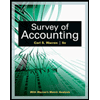 Survey of Accounting (Accounting I)AccountingISBN:9781305961883Author:Carl WarrenPublisher:Cengage Learning
Survey of Accounting (Accounting I)AccountingISBN:9781305961883Author:Carl WarrenPublisher:Cengage Learning





